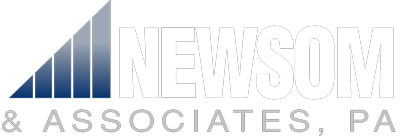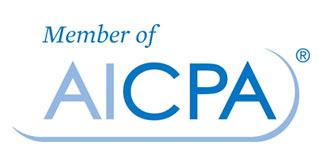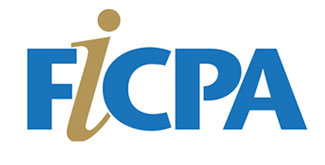Several significant tax law changes took effect in 2021 that may affect your business’s federal tax filings. As the year draws to a close, we should review these changes, as well as your business’s projected taxable income or loss to see what actions might be appropriate before year end to reduce taxes. It’s also important to ascertain whether enough estimated taxes have been paid to avoid any underpayment of estimated tax penalties.
Presently, Congress is engaged in negotiations on a tax and spending bill that will likely result in significant tax changes affecting businesses, beginning next year. Should such a bill pass, we will want to factor such changes into our year-end planning. For now, we’ll need to base our planning on existing law.
I would like to meet with you in the near future to discuss some of the items below that may impact your taxes and to discuss whether there are some actions we need to take before the end of the year.
Section 179 Expensing and Depreciation Deductions
Depending on what the income of your business looks like for 2021, there are two “go-to” deductions that generally take priority when trying to reduce income for tax purposes: the Section 179 deduction, where your business can elect to deduct the entire cost of certain property acquired and placed in service during the year, and the bonus depreciation deduction, where 100 percent of the cost of business property may be expensed. Under the Section 179 expensing option, your business can immediately expense the cost of up to $1,050,000 of “Section 179” property placed in service in 2021. This amount is reduced dollar for dollar (but not below zero) by the amount by which the cost of the Section 179 property placed in service during the year exceeds $2,620,000.
The bonus depreciation rules apply unless the business specifically elects out of those rules. An election out might be preferable where a business expects a tax loss for the year and the bonus depreciation would just increase that loss or where it might be advantageous to push depreciation deductions into future years. For example, where the owner of a pass-thru entity to whom these deductions would flow expects to be in a higher tax bracket in future years, such deductions might be of more use in those future years. If applying both the Section 179 deduction and the bonus depreciation deduction to an asset, the Section 179 deduction applies first.
If you are in the market for a vehicle, the purchase of a sport utility vehicle weighing more than 6,000 pounds, can trigger a bigger deduction than if a smaller vehicle is purchased. This is because vehicles that weigh 6,000 pounds or less are considered listed property and the related first-year deduction is limited to $18,200 for cars, trucks and vans acquired and placed in service in 2021. For vehicles weighing more than 6,000 pounds, however, up to $26,200 of the cost of the vehicle can be immediately expensed.
If you leased a passenger automobile in 2021 with a value of more than $51,000, the deduction available for that lease expense is reduced. In such cases, the lessee must include in gross income an amount determined by a formula the IRS issues each year.
Energy Efficient Building Deduction
Please let me know if your business made any energy-efficient improvements to a building during the year, such as installing property that is part of (1) an interior lighting system, (2) heating, cooling, ventilation, and hot water systems, or (3) the building envelope. If so, an energy efficient building deduction, which was made permanent in the CAA 2021, may be available.
Expenses Paid with Paycheck Protection Program Loan Funds
If your businesses received a loan through the Paycheck Protection Program (PPP), which ended on June 30, 2021, and has not yet received forgiveness of that loan, a simplified loan forgiveness application has been issued for PPP loans of $150,000 or less. A forgiven PPP loan is not includible in income, and no deduction will be denied, no tax attribute will be reduced, and no basis increase will be denied by reason of the exclusion from gross income of a forgiven PPP loan. In addition, PPP loan recipients that did not deduct certain otherwise deductible expenses paid or incurred in 2020 based on guidance available at that time can elect to deduct these expenses on their 2021 tax return rather than by filing an amended return or administrative adjustment request. Thus, if you received a PPP loan, we need to discuss its impact on your 2021 tax return.
Importance of Employee Benefits
As you probably well know, the employment landscape has changed significantly since the beginning of the COVID pandemic. Many businesses are facing a worker shortage and are reevaluating what it will take to get employees in the door. If your business is not already doing so, it may reap substantial tax benefits, as well as non-tax benefits, by offering a retirement plan and/or other fringe benefits to employees. Businesses that offer such benefits have a better chance of attracting and retaining talented workers which, in turn, reduces the costs of searching for and training new employees. Contributions made to retirement plans on behalf of employees are deductible and your business may be eligible for a tax credit for setting up a qualified plan.
In addition, as a business owner you, and your spouse, can take advantage of a retirement plan yourselves. By adding your spouse as an employee and paying a salary up to the maximum amount that can be deferred into a retirement plan you could realize significant tax savings. For example, if your spouse is 50 or older, a salary of $26,000 could all go into a 401(k), leaving him or her with a retirement account but no current year taxable income.
Because health insurance is a much sought-after employee benefit, you might consider setting up a high deductible health plan paired with a health savings account (HSA). The benefits to your business would include savings on health insurance premiums that would otherwise be paid to traditional health insurance companies and having employee wage contributions to the plan not being counted as wages. Thus, neither your business nor the employee would be subject to FICA taxes on the payroll contributions. As for the employee, he or she can reap a tax deduction for funds contributed to the HSA. Because there is no use-it-or-lose-it policy, the funds can grow tax free and be used in retirement.
Another employee benefit worth considering is the establishment of a flexible spending account (FSA) for health-care and dependent-care expenses. An FSA allows employees to be reimbursed for medical and dependent-care expenses and is usually funded through voluntary salary reduction agreements with the employer. The maximum amount that can be set aside in a health-care FSA for 2021 is $2,750. The maximum amount that may be set aside for a dependent care FSA is $5,250 for a single filer and $10,500 for joint filers. Your business would have the option of making or not making contributions to the FSAs. Some of the tax benefits of an FSA include the fact that contributions made by the business can be excluded from the employee’s gross income and thus no employment or federal income taxes are deducted from the contributions. Also, payments by the FSA to the employee are tax free if used for qualified expenses, and the FSA can be used to pay qualified expenses even if the employer or employee haven’t yet placed the funds in the account. Also, while FSAs previously had a modified use-it-or-lose-it policy, meaning employees could carryover over a limited amount of unspent funds if the FSA plan allowed it, CAA 2021 temporarily allows a “full” carryover of unspent funds.
Qualified Business Income Deduction
If you are conducting your business as a sole proprietorship, a partner in a partnership, a member in an LLC taxed as a partnership, or as a shareholder in an S corporation, the qualified business income (QBI) deduction under Code Sec. 199A can significantly help reduce taxable income. The QBI deduction allows eligible taxpayers to deduct up to 20 percent of their QBI, plus 20 percent of qualified real estate investment trust dividends and qualified publicly traded partnership income. A W-2 wage limitation amount may apply to limit the amount of the deduction. The W-2 wage limitation amount must be calculated for taxpayers with a taxable income that exceeds a statutorily-defined amount (i.e., the threshold amount). For any tax year beginning in 2021, the threshold amount is $329,800 for married filing joint returns, $164,925 for married filing separately, and $164,900 for all other returns.
Since the QBI deduction reduces your taxable income, and is not used in computing adjusted gross income, it does not affect limitations based on adjusted gross income such as the medical expense deduction or the calculation of social security income that is includible in income. The QBI deduction does not apply to a “specified service trade or business,” which is defined as any trade or business involving the performance of services in the fields of health, law, accounting, actuarial science, performing arts, consulting, athletics, financial services, brokerage services, including investing and investment management, trading, or dealing in securities, partnership interests, or commodities, and any trade or business where the principal asset of such trade or business is the reputation or skill of one or more of its employees. Engineering and architecture services are specifically excluded from the definition of a specified service trade or business.
Rental Real Estate
If you incurred losses in a real estate business, we need to determine whether the losses were incurred in a passive activity or not, as passive activity losses are only deductible against passive activity income. However, a deduction of up to $25,000 ($12,500 if married filing separately) may be allowed against nonpassive income to the extent you or your spouse actively participated in the rental real estate activities. However, the deduction is subject to a phaseout for individuals with modified adjusted gross income above $100,000 (or $50,000 if married filing separately).
Rental real estate enterprises operated by individuals and owners of passthrough entities may also qualify for the QBI deduction if certain criteria are met. For example, to qualify for the QBI deduction, your rental business activity must be considerable, regular, and continuous in scope. In determining whether this criterion is met, relevant factors include, but are not limited to, the following:
- the type of rented property (commercial real property versus residential property);
- the number of properties rented;
- an agent’s day-to-day involvement;
- the types and significance of any ancillary services provided under a lease; and
- the terms of a lease (for example, a net lease versus a traditional lease and a short-term lease versus a long-term lease).
A rental real estate activity will be treated as a business eligible for the QBI deduction if certain safe harbor requirements are satisfied, such as:
- separate books and records are maintained to reflect the income and expenses for each rental real estate enterprise;
- for rental real estate enterprises that have been in existence less than four years, 250 or more hours of rental services are performed per year with respect to the rental real estate enterprise (with slightly less stringent requirements for rental real estate enterprises that have been in existence for at least four years);
- contemporaneous records have been maintained, including time reports, logs, or similar documents, regarding the following: (i) hours of all services performed; (ii) description of all services performed; (iii) dates on which such services were performed; and (iv) who performed the services; and
- certain compliance requirements are met.
Thus, to qualify for the QBI deduction with respect to rental real estate, it’s important to determine if the safe harbor conditions are met. Alternatively, even if the safe harbor conditions are not met, there may be certain actions we can take to ensure that your real estate business falls within the “trade or business” guidelines for taking the deduction.
Meal and Entertainment Expenses
Generally, the business deduction allowable for food or beverage expenses is limited to 50 percent of the amount spent. However, CAA 2021 enacted a more lenient rule for expenses relating to food and beverages purchased from restaurants in 2021 and 2022. Under that rule, a 100 percent deduction is allowed, providing the expense is properly documented. As part of that documentation, the business purpose of the meal must be provided. The term “restaurant” in this case means a business that prepares and sells food or beverages to retail customers for immediate consumption, regardless of whether the food or beverages are consumed on the business’s premises. It does not include a business that primarily sells pre-packaged food or beverages not for immediate consumption, such as a grocery store; specialty food store; beer, wine, or liquor store; drug store; convenience store; newsstand; or a vending machine or kiosk.
Electing the De Minimis Safe Harbor Deduction
If your business has not already done so, and is eligible, we should explore making an election to apply the IRS’s de minimis safe harbor rules to any amounts paid to acquire or produce tangible property to the extent such amounts are deductible for financial accounting purposes. If your business has an applicable financial statement (AFS), it can use the safe harbor to deduct amounts paid for tangible property up to $5,000 per invoice or item (as substantiated by invoice). If your business doesn’t have an AFS, it can use the safe harbor to deduct amounts up to $2,500 per invoice or item (as substantiated by invoice).
Vehicle-Related Deductions and Substantiation Requirements
If your business has incurred vehicle or transportation-related expenses, we need to ensure that any amount taken as a deduction is properly substantiated. When the IRS selects a business return for an audit, it tends to focus on vehicle expenses and disallow them if they are not properly substantiated. Thus, for such expenses, it’s important that the records relating to any such expenses include the following for each vehicle used in the business:
- the amount of each separate expense with respect to the vehicle (e.g., the cost of purchase or lease, the cost of repairs and maintenance, etc.);
- the amount of mileage for each business or investment use and the total miles for the tax period;
- the date of the expenditure; and
- the business purpose for the expenditure.
The following are considered adequate for substantiating such expenses:
- records such as a notebook, diary, log, statement of expense, or trip sheets; and
- documentary evidence such as receipts, canceled checks, bills, or similar evidence.
Records are considered adequate to substantiate the element of a vehicle expense only if they are prepared or maintained in such a manner that each recording of an element of the expense is made at or near the time the expense is incurred.


